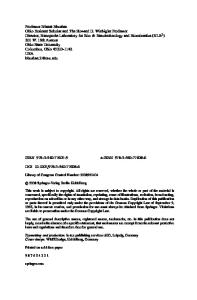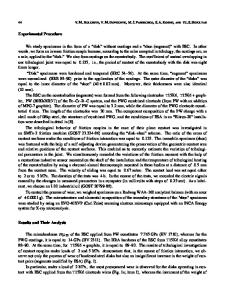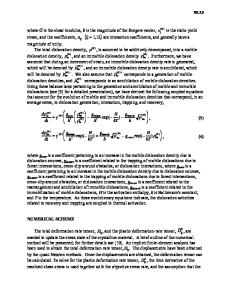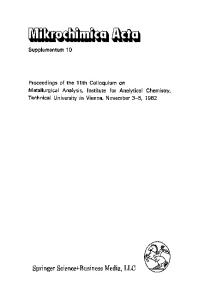Boundary Lubrication of Materials
- PDF / 1,594,853 Bytes
- 5 Pages / 604.8 x 806.4 pts Page_size
- 69 Downloads / 369 Views
es are not perfectly smooth, and engineering surfaces can be quite rough, two surfaces in contact produce a wide distribution of stresses within the contact zone. Therefore, there is no pure EHL or
Wear
Chemical Reactivity with Surface -
Figure 1. Optimum reactivity toform effective lubricating film.
BL lubrication régime. A mixed lubrication régime exists. Some asperities are in the hydrodynamic mode, some asperities in EHL, and some asperities in BL mode. As wear occurs, the surface topography also changes. Depending on the extent of chemical reactions, conformity of surfaces can either develop or collapse. This changes the real area of contact, hence, the asperity stress distribution. This paper will address some of the important issues in this mixed régime, including adsorption, reaction, film formation, nature of the film, and materials influence. Adsorption vs. Reaction Many researchers hâve suggested that both physically and chemically adsorbed molécules can affect lubrication. Models hâve been developed using the adsorption formalism (Langmuir-Hinshelwood model) to describe the wear data.1,3 While this model has brought some success, the constants used in the équation cannot be independently estimated. Expérimental wear data are needed for every chemical and material combination. Other researchers hâve suggested that the chemically reacted surface layer is the key to successful bound ary lubrication'15 and adsorption is merely the prélude. Adsorption clearly has to précède reaction, yet not ail adsorbed molécules will be effective boundary lubricants. The question remains unresolved. One critical issue in the adsorption/ reaction scheme is preferential adsorption. Some molécules preferentially adsorb and
Table I: Chemical Effect on Titanium/Titanium Wear Couples.
Lubricant Chemistry
Wear Volume mm3
Coefficient of Friction
None Purified paraffins (PPO)
1.33 1.49
0.4 0.9
Dibenzyl disulfide Chlorinated fatty acid C18 acid chloride
2.26 0.56 0.31
0.5 0.2 0.4
PPO + 1% TCP PPO + 1% ZDDP PPO + 1% graphite PPO + 1% MoS2 Base case: PPO on steel
1.66 1.66 0.64 1.33 0.001
0.5 0.8 0.3 0.3 0.08
Test Conditions: Bail on three flats 5 kg 0.077 m/s 3 0 min Titanium on titanium
MRS BULLETIN/0CT0BER1991
Boundary Lubrication of Materials
Table II: Friction and Wear Data on Selected Model Compounds. Chemical Compound*
Wear Volume mm3 x 10~3
Friction Coefficient
Wear Scar Appearance
Film in Scar?
Purified paraffin oil (PPO) Oleic acid Glycol (polypropylene-diol) [1000 MW] Glycol (polypropylene-diol) [400 MW] Ethyl stéarate Polyol ester Fatty and synthetic esters Alkyl ZnDP A Aryl phosphate A Aryl phosphate B Aryl phosphite Acid phosphate Chlorinated paraffin Chlorinated fatty acid Antimony dialkyldithiocarbamate Sulfurized hydrocarbon Organo molybdenum dithiocarbamate Sulfur-molybdenum compound Sulfurized fatty oil
1.356 0.227 0.245 1.459 1.816 2.436 2.807 0.206 0.232 0.272 0.301 0.407 2.542 3.267 1.298 1.390 1.734 2.057 2.555
0.113 0.076 0.077 0.130 0.120 0.134 0.111 0.088 0.081 0.090 0.074 0.076 0.1
Data Loading...











